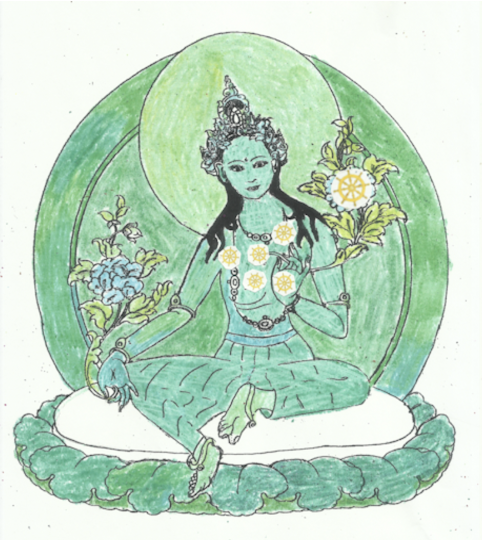
Zen Of The Sacred Feminine
Zen of the Sacred Feminine: A Brief Explanation
By Roshi Ilia Shinko Perez
One of the characteristics that I find most outstanding in Zen is that it adapts to the different cultures of the countries where its practice is spreading. For example, in the last fifty years in the United States, there has been a great boom in the participation of women in the practice of Zen. If we also include the current ecological planetary crisis and the words of the Dalai Lama, who in one of his lectures stated that Western women would save the planet, it seems a logical consequence that all these events would cause a resurgence of the Sacred Feminine in the world and in Zen.
The Sacred Feminine already existed in the roots of Zen when Zen flourished. She was known as Prajnaparamita. She is also called Mother of All Buddhas or Mother of the Universe, the one whose wisdom helps us cross from the shore of delusion to the shore of clarity. This is what her name means.
The scholars Keith Dowman, Lex Hixon and others, believe that our Zen Mother Prajnaparamita is an evolution of the Great Mother of prehistoric times. And like Her, Prajnaparamita contains in Herself all the universal yang (male) and yin (female) energies. She is the symbol of creation. The reason She is called Sacred Feminine is because of Her ability to procreate. However, Her womb is the womb of emptiness from which all creations arise. Carl Jung proclaimed that the Mother of All Things exists in the depths of the human mind and She is accessible to each one of us. He also said that being in contact with Her will benefit our lives immensely.
The Female Buddha Tara is an evolution of Prajnaparamita and like Her, Tara is a symbol of our deepest nature, of our planet and of all its beings, regardless of gender and sexual preferences.
According to Tibetan Rinpoches, the Buddha Shakyamuni was familiar with the practice of Tara. They say that he prophesied that Her practice would help us in times of future crisis. It seems that the Buddha was referring to the present time. In these times of sociopolitical and ecological crisis it is very important that we connect with the Sacred Feminine within ourselves.
The reemergence of Tara’s energy, her feminine wisdom and her compassion are essential for the earth and all people right now. In these times, I feel an urgent need for the reemergence of the divine feminine, and not only in women. Lama Tsultrim Allione
Tara practice is not a theistic practice. We do not worship a goddess external to us, but by chanting her mantra and by visualizing Tara and her different manifestations, we are helping to awaken those same energies within us. Visualization of light, like the visualization of Tara, can help us to release toxic energy from our sense perceptions.
Tara is considered the contemplative activist. Her left leg in meditation posture symbolizes that Her heart-mind is in the state of unity or Samadhi; and Her right leg, about to enter the world, symbolizes that she is ready to help us. With her right hand over her right knee in the mudra of generosity, Tara gives us her love, her help and her wisdom. The resurgence of Tara’s energy and her compassion are essential for our planet and for all beings.